You don’t have to be a dedicated conservationist to appreciate the satisfaction that comes with planting a tree. The feeling of giving back to – rather than taking from – the Earth’s ecosystem is something that everyone should experience.
Trees aren’t just a beautiful and majestic plant, they also play a key role in sustaining life for a number of living beings such as birds, squirrels, and insects, among countless others. This is why at Forrest Keeling, our mission revolves around ‘restoring Earth’s ecosystems one tree at a time.’ This calling inspired Wayne Lovelace (CEO) to develop the RPM® system in an effort to replenish the tree populations which were devastated during the flood of the Mississippi and Missouri Rivers in 1993.
What is RPM®?
The patented Root Production Method (RPM®) is a propagation technique that improves upon the well-documented weaknesses of conventional bareroot stock material, most notably slow growth and low survival rates. RPM® focuses on enhancing root growth, and the results have been nothing short of remarkable. We’re proud to say that RPM plants have a 95% survival rate along with accelerated growth and earlier maturation.
The outcomes we’ve experienced using this method have been so exceptional that we felt an obligation to make RPM products available to the rest of the world. Today, we offer plants grown using RPM to anyone looking to bolster their native tree nursery in a way that’s quicker and more effective than with traditional trees.
Why Choose an RPM® Tree?
We understand that tree planting is a significant investment of both time and money. Because of this resource commitment, you want to ensure your efforts will pay off.
Enjoying a tree for years (or even decades) in the future all starts with adequate preparation. The first step in achieving your goals is proper tree selection. With so many options to choose from it can be overwhelming, but when you choose a native tree produced with Forrest Keeling’s RPM technology, you’re already on your way to success!
The Planting Process
The first step of the planting process is choosing a time of year when the soil is workable. This varies by region, but generally-speaking, in the Midwest this will be in the fall – typically between October 20th and December 10th. Cooler air temperatures but still-warm soil, along with plentiful rain, create ideal conditions. When you plant during this period, your tree has time to develop a strong root system and will be ready to take off in the spring. If you’re unable to plant in the fall, spring planting (March 1st through April 30th) is also a viable option.
Once you’ve circled your date on the calendar, the fun can begin! Here are our six steps to planting success when adding an RPM tree to your native nursery:
Step 1: Give ‘em Room
Dig your planting hole twice as wide – and a bit shallower – than the root ball of your tree. Rough up the sides of the planting hole. By adding some extra space on the sides, you allow new roots to grow. Making it uneven on the sides helps facilitate root tips penetrating the soil.
Step 2: Ready Your Tree
If you’re familiar with the tree planting process this might sound familiar: Lay the tree on its side and tap the container’s sides to loosen the root ball. Remove the container, and gently begin separating the roots, guiding them outward. Be sure to cut off abnormally long or crooked roots.
Step 3: Prepare the Soil
Compacted soil will improve when combined with 50/50 compost. The loosened soil provides an optimal environment for new roots to thrive.
Step 4: Stand Up Straight
Position your tree in the planting hole so that it’s standing upright. Tilt the root ball, and backfill underneath while adjusting the tree’s orientation as needed.
Step 5: Get a Good Start
Backfill with loosened soil, and add water as you go. Incorporating root stimulator can speed up the development of feeder roots. Once you’ve filled it in, firm up your soil to stabilize the tree and eliminate air pockets.
Step 6: The Grand Finale
Once planted, add three to four inches of hardwood mulch around your tree, avoid building up directly on the trunk of the tree. This helps maintain proper soil moisture and temperature, and also helps to keep weeds at bay. Tree wrap and staking may be helpful for larger trees. For protection from wildlife and sunscald, a tree wrap is recommended.
Thank You for Contributing to Our Mission
Whether you’re purchasing RPM trees to sell to customers or plan on planting them yourself, we want to express our gratitude for your contribution to our mission. When we restore native tree populations, a chain reaction follows that results in helping local ecosystems flourish.
To learn more about how you can add RPM trees to your native tree nursery, visit our online store and contact us through our website.
